On October 15, 2024, the Swedish government introduced its defense strategy for 2025–2030. The plan allocates 170 billion SEK (€14.9 billion) for military defense and 35.7 billion SEK (€3.1 billion) for civil defense, aiming to raise defense spending to 2.6% of GDP by 2028. It also includes a gradual increase in conscription, targeting 10,000 conscripts annually by 2030 and up to 12,000 by 2035.
Focus | Russia’s war in Ukraine triggers Sweden’s biggest defense investment since Cold War.
By 2035, the wartime organization of the Swedish Armed Forces is projected to require approximately 130,000 personnel. (Picture source: Sweden MoD)
Sweden’s transition from military neutrality to full NATO membership has evolved over recent years, particularly in response to Russia's 2022 invasion of Ukraine. This shift in policy represents a significant change from Sweden’s traditional stance, which had prioritized neutrality during the Cold War. Sweden began enhancing its defense posture in 2015 and further increased support to Ukraine after the invasion.
As part of its integration into NATO, Sweden has aligned its national defense strategy with collective defense obligations. This transition has involved increasing military readiness, modernizing key systems, and preparing to support NATO operations. The new plan reflects Sweden’s commitment to NATO’s collective security framework.
This article examines the details of Sweden's 2025–2030 defense budget, which includes significant investment in military upgrades, expansion of personnel, and improvements across various defense sectors. The strategy aims to strengthen Sweden’s military capabilities and civil defense infrastructure.
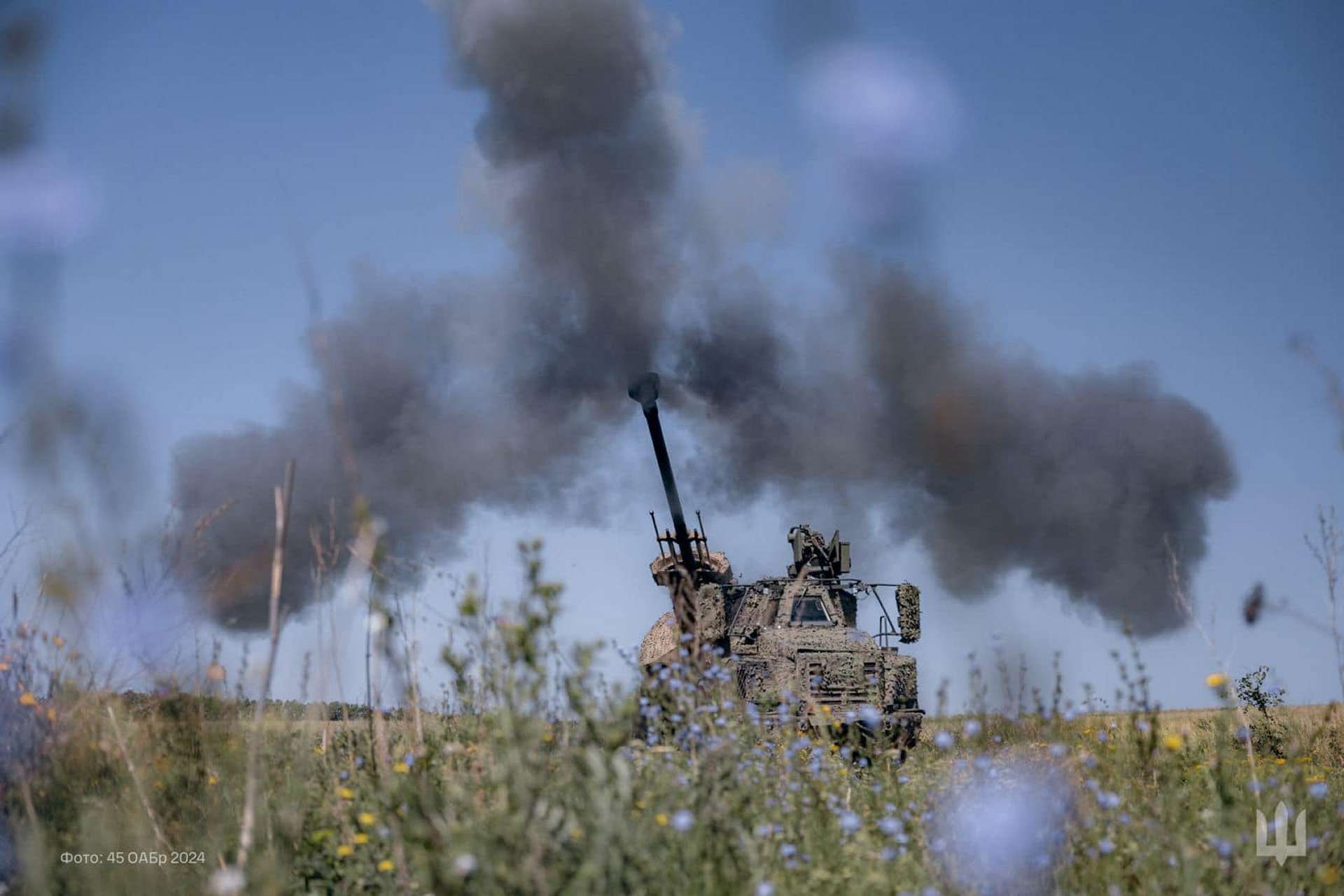
Since Russia’s invasion, Sweden has provided approximately €4.2 billion of military aid to Ukraine across 17 packages, including systems like Stridsvagn 122 tanks, CV90 IFVs, and Archer self-propelled howitzers. (Picture source: 45oabr)
Lessons from Ukraine
Since Russia’s invasion, Sweden has provided substantial military aid to Ukraine, totaling 48 billion SEK (approximately €4.206.600.000) across 17 packages, including systems like Stridsvagn 122 tanks, CV90 IFVs, and Archer self-propelled howitzers. This experience underscores the importance of maintaining stockpiles and rapidly replenishing donated equipment, which explains why the new defense strategy highlights the need for logistical support in prolonged conflicts.
The Swedish government has committed 75 billion SEK (€6.572.812.500) over three years (2024–2026) for military assistance to Ukraine, covering financial donations, soldier training, and procurement through the Defense Materiel Administration. Sweden’s participation in capability coalitions (focusing on drones, maritime security, and demining) further demonstrates its dedication to supporting Ukraine's defense.
For Swedish authorities, the conflict also highlights the critical role of civilian defense, emphasizing societal resilience and cyber defense. To protect critical infrastructure, the new defense strategy includes the creation of a national cybersecurity center to counter Russian cyberattacks.
Another lesson from Ukraine is the importance of technological adaptability in warfare. Rapid integration of new technologies and modifications to existing systems are seen as crucial. The Ukraine conflict also revealed the high resource consumption associated with intense warfare, particularly in terms of ammunition and other vital supplies. Consequently, Sweden plans to collaborate with the defense industry and government to enhance readiness for innovation, ensuring stockpiles of key materials and systems with long delivery times. Additionally, the strategy recognizes the significance of layered air defense and long-range strike capabilities.
The strategy emphasizes improving intelligence, particularly in reconnaissance and surveillance, with the Swedish Air Force set to receive new reconnaissance aircraft. The value of unmanned aerial systems in Ukraine has prompted Sweden to plan for their expanded use in operations to enhance situational awareness and mobility. For instance, this has led BAE Systems Hägglunds and UAV manufacturer Airolit to join forces in integrating autonomous drone surveillance capabilities into the CV90 combat vehicle.
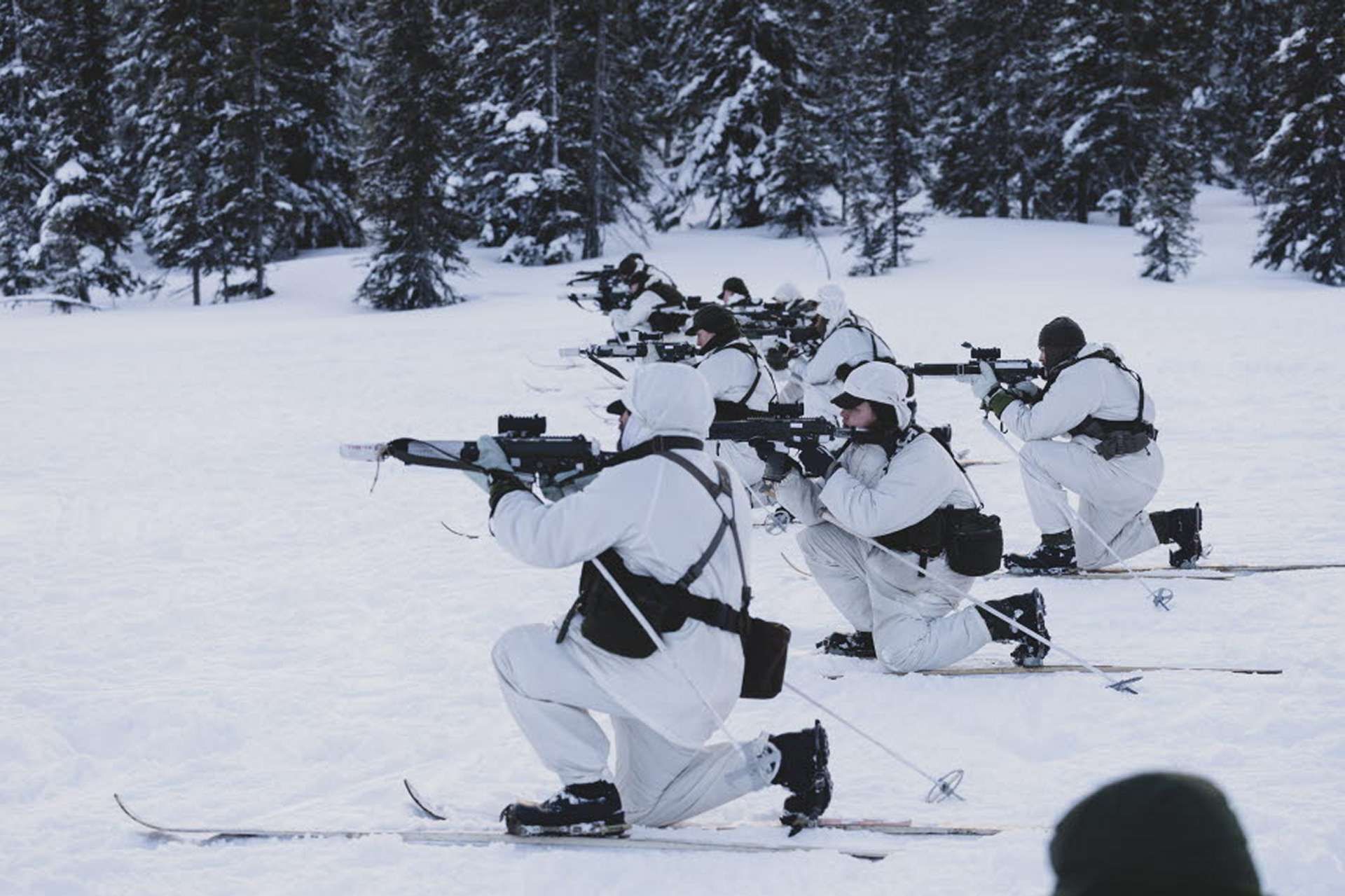
The Swedish government also plans to increase the number of conscripts trained for junior leadership roles to strengthen the chain of command and address potential leadership shortages as Sweden expands its defense capacity. (Picture source: Swedish MoD)
Personnel and Conscription Expansion
One of the most critical aspects of Sweden’s defense strategy is the significant expansion of conscription and personnel within the Swedish Armed Forces. By 2035, the wartime organization is projected to require approximately 130,000 personnel. To achieve this, the annual intake of conscripts will gradually increase, with targets of 10,000 conscripts by 2030 and 12,000 between 2032 and 2035. This expansion highlights the government's view that conscription is essential to maintaining the Swedish Armed Forces at a level sufficient for national defense and meeting NATO commitments under Article 3.
The government also plans to increase the number of conscripts trained for junior leadership roles to strengthen the chain of command and address potential leadership shortages as Sweden expands its defense capacity. Additionally, a fourth testing center will be established to manage the increased recruitment and testing of conscripts.
In line with Sweden's integration into NATO, conscripts may participate in the alliance's collective defense efforts. In an Article 5 scenario, Swedish conscripts could be deployed internationally to support NATO operations. This represents a shift in Sweden’s defense approach, with conscripts expected to contribute to collective defense beyond national borders.
The Swedish defense strategy further emphasizes improving the unit turnover system, ensuring operational units remain ready through refresher training exercises. The Total Defense Conscription and Testing Agency will play a key role in reaching the increased conscription targets and preparing the forces for both peacetime and wartime scenarios.
Efforts to retain personnel and address current shortages are also part of the strategy. These include increasing the number of professional officers and group leaders, expanding officer training programs, and boosting civilian staffing to free military personnel for tasks requiring specific expertise. By addressing these challenges, Sweden aims to build a defense force capable of fulfilling both national and NATO obligations in the future.
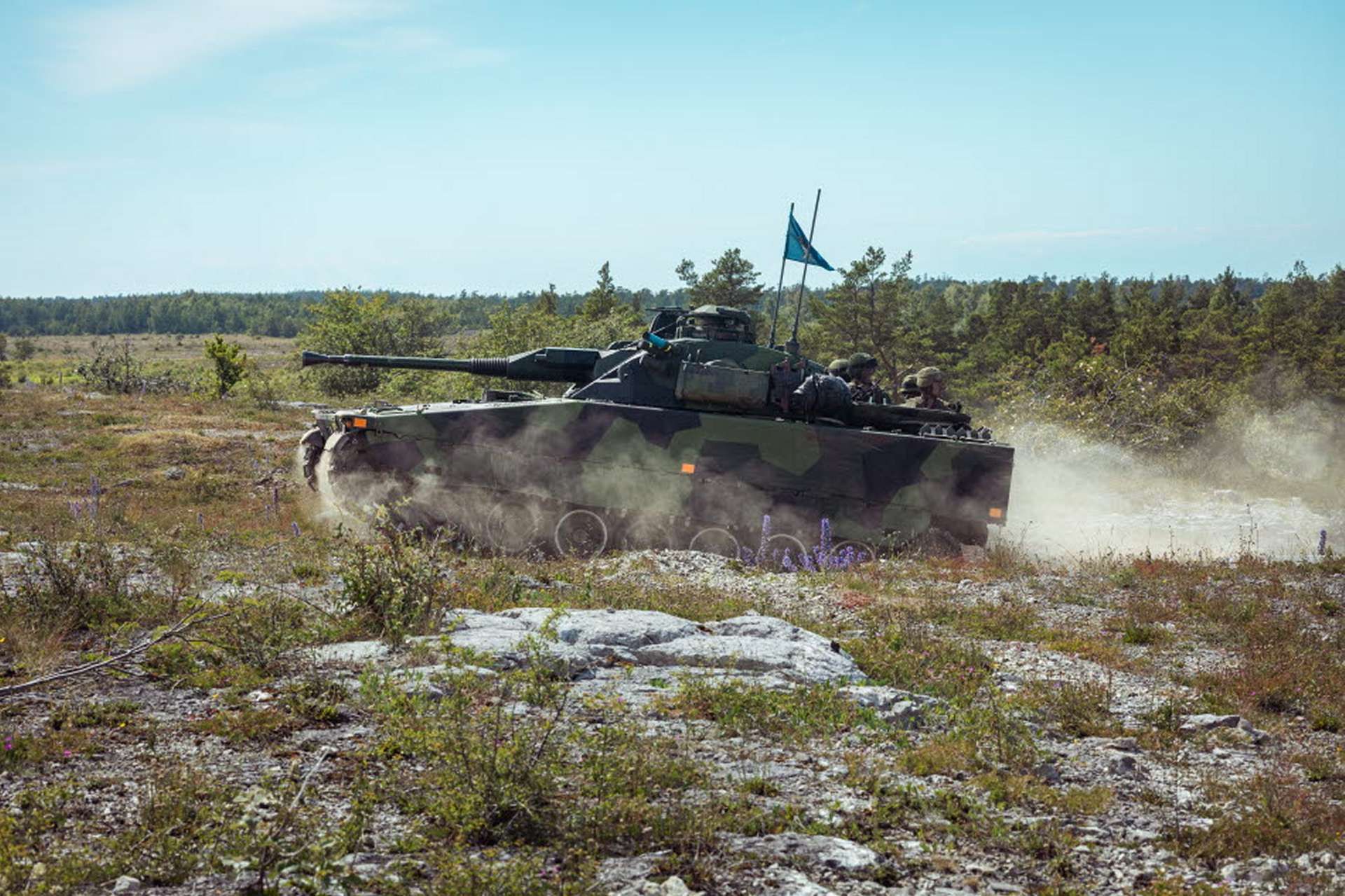
Priorities for the Swedish Army include modernizing the CV90 infantry fighting vehicle, acquiring additional combat vehicles and tanks such as the STRV 122 and STRV 123A, and upgrading artillery and air defense systems by 2030. (Picture source: Swedish MoD)
Armed Forces Modernization
By 2030, Sweden plans to have four fully operational brigades, with conscription increasing to 10,000 by 2030 and 12,000 by 2035. The strategy focuses on enhancing the Army's capacity to operate in larger formations, such as divisions and corps, in alignment with NATO’s requirements. New territorial units will be established to support national defense and NATO operations, working alongside the Home Guard.
These territorial units, including rifle battalions, communications teams, and support units, will operate independently using equipment from upgraded field units, providing flexibility. Their development will occur between 2025 and 2035. This reorganization aims to align Sweden’s military structure with its new NATO commitments.
Modernization efforts will also extend to field units, which will receive additional combat and support resources. This includes two artillery battalions, a rocket artillery unit, and battalions specializing in intelligence, engineering, air defense, and logistics. The procurement of rocket artillery and cruise missiles is a key element of the strategy, enhancing Sweden’s deterrence capabilities for national defense and NATO operations, particularly during crises.
The government recognizes the need to improve the Army's readiness, noting that some equipment is nearing the end of its lifecycle. Priorities include modernizing the CV90 infantry fighting vehicle, acquiring additional combat vehicles and tanks such as the STRV 122 and STRV 123A, and upgrading artillery and air defense systems by 2030. To improve the Army's capabilities in areas such as reconnaissance, surveillance, command and control, and fire control, various types of unmanned remotely operated aerial vehicles will also be acquired.
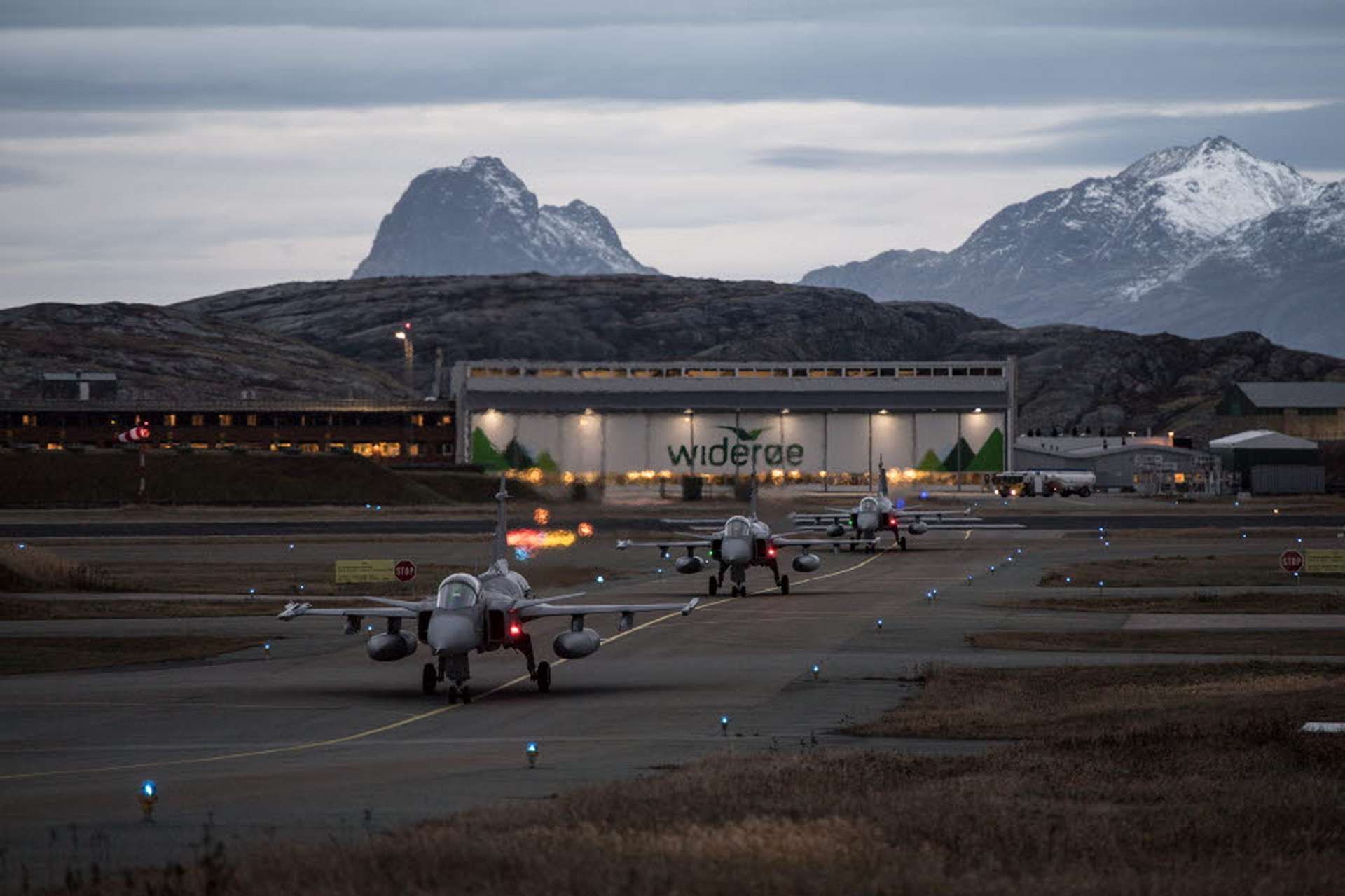
By 2030, the Swedish Air Force will retain six fighter squadrons equipped with JAS 39 aircraft, split equally between the JAS 39E variant and the older JAS 39C/D models. (Picture source: Swedish MoD)
Air Force Development
The Swedish Air Force is set to implement significant upgrades aimed at improving its integration into NATO’s Integrated Air and Missile Defense (IAMD) system. A key focus will be on enhancing control over Sweden’s airspace in coordination with allied forces, with the capacity for rapid responses to potential threats. By 2030, the Air Force will retain six fighter squadrons equipped with JAS 39 aircraft, split evenly between the JAS 39E variant and the older JAS 39C/D models.
The Swedish government has recognized the need to make a strategic decision by 2030 regarding the replacement of the JAS 39 fighter jet, requiring broad political consensus and thorough evaluation. Although the JAS 39 is expected to remain in service beyond 2050, the lengthy development timeline of up to 25 years for a new fighter system necessitates early planning. Consequently, the government has tasked the Armed Forces with conducting a concept study. In response, Saab has announced the development of both manned and unmanned fighter concepts, aiming to establish a sixth-generation combat air platform for Sweden's defense needs.
This study will assess three potential options: developing a domestic system, collaborating internationally, or procuring a foreign system. The decision, which must be made by 2030, will consider the time needed to specify requirements, develop, and introduce a new system, with long-term financial commitments expected beyond 2035. A parliamentary reference group will be included in the study to ensure the necessary political support.
Another aspect of the Air Force's development will involve upgrading airbase infrastructure. Sweden plans to disperse and mobilize air assets across five main airbases, allowing for swift responses to threats and ensuring continuous operations. These efforts include developing a network of national sensor, control, and response systems, modernizing command centers to meet NATO standards, and enhancing the ability to host allied forces.
Sweden is also planning to acquire long-range strike capabilities, focusing on procuring munitions and systems to enable extended-range operations in line with NATO’s expectations for mobility and precision strikes. The supply of various ammunition types for air, maritime, and land targets is planned for the 2025–2030 period and beyond. The capability for long-range land attack will be introduced during 2025–2030 within the fighter divisions, in line with the 2020 defense decision.
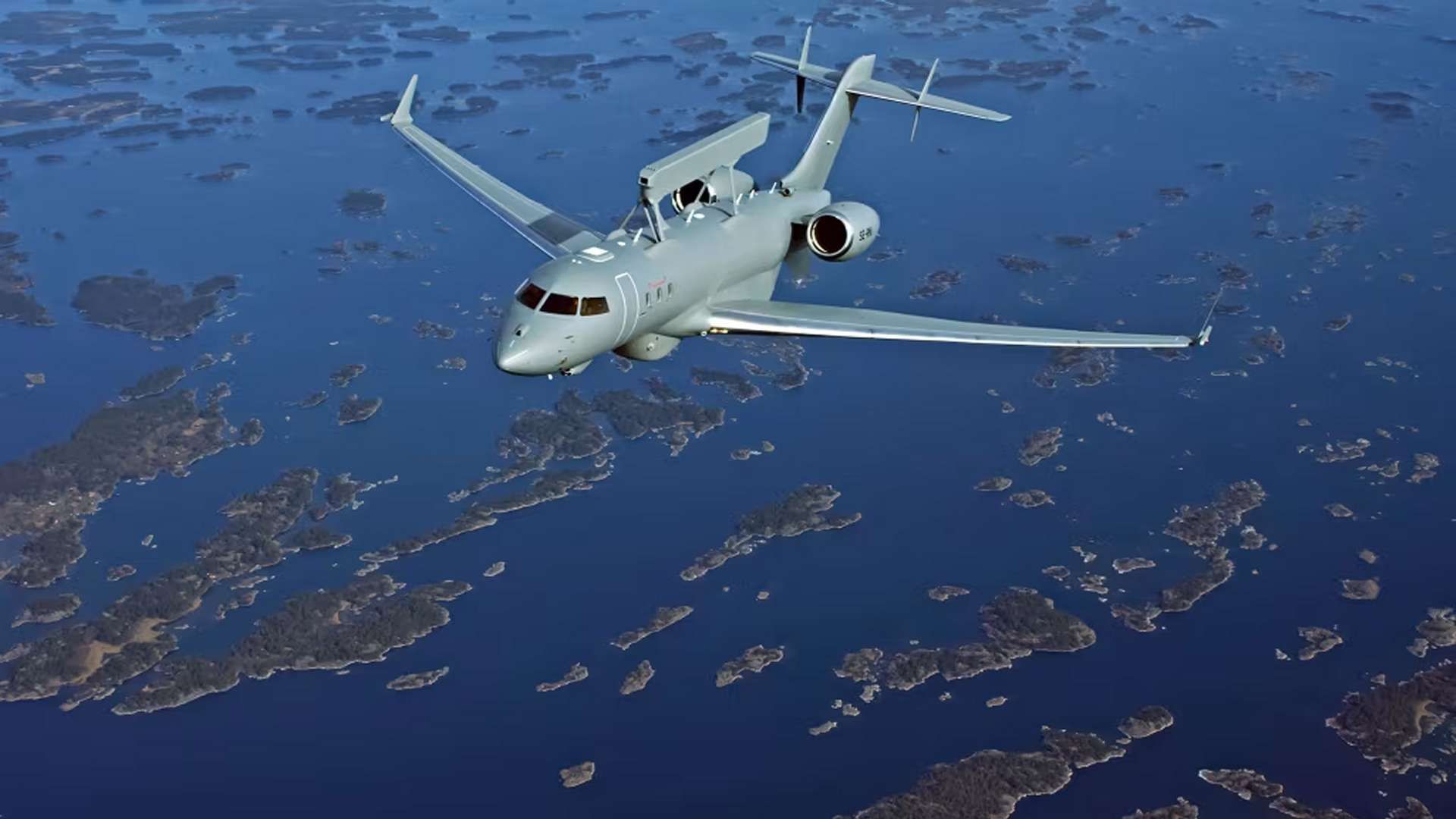
The integration of the S 106 Global Eye airborne early warning and control system will enhance Sweden's detection and tracking capabilities, replacing the older ASC 890, which will be transferred to Ukraine. (Picture source: Saab)
Additionally, the integration of the S 106 Global Eye airborne early warning and control system will enhance threat detection and tracking, replacing the older ASC 890, which will be transferred to Ukraine.
To address personnel shortages, Sweden will expand its fighter pilot training programs, including some international training opportunities. The Air Force will also replace outdated equipment, such as the Saab 105/SK 60 training aircraft with the Grob G 120 TP (SK 40), and invest in new counter-drone capabilities. The procurement of unmanned aerial systems for reconnaissance and security will be a priority in the coming years.
Sweden’s transport aviation capabilities will be bolstered by replacing its six C-130H Hercules (TP 84) aircraft to ensure continued tactical airlift capacity. Additional upgrades will involve reviewing the replacement of the Saab 340B (TP 100) and Gulfstream IV (TP 102) aircraft used for personnel transport and addressing operational challenges with the NH90 Tactical Transport Helicopter (TTP), designated by Sweden as HKP 14.
As noted in the document, the HKP 14 has low availability and high operational costs, and its maritime version (HKP 14F) is not yet fully operational. Therefore, the Swedish Armed Forces propose phasing out the land version (HKP 14E) as more Sikorsky UH-60M (HKP 16) units are delivered. The Armed Forces also propose acquiring a new ship-based maritime helicopter for the new Luleå-class surface combat vessels, with the new system to be delivered by 2035 as an integrated part of the vessel’s capabilities.
Finally, space operations are an integral part of Sweden’s defense strategy, with plans to enhance capabilities in communication, reconnaissance, and early warning through the acquisition of surveillance satellites, secure satellite communications, and satellite launch capacity from Esrange. These developments support Sweden’s strategic autonomy and its contribution to NATO operations, particularly in the Arctic.
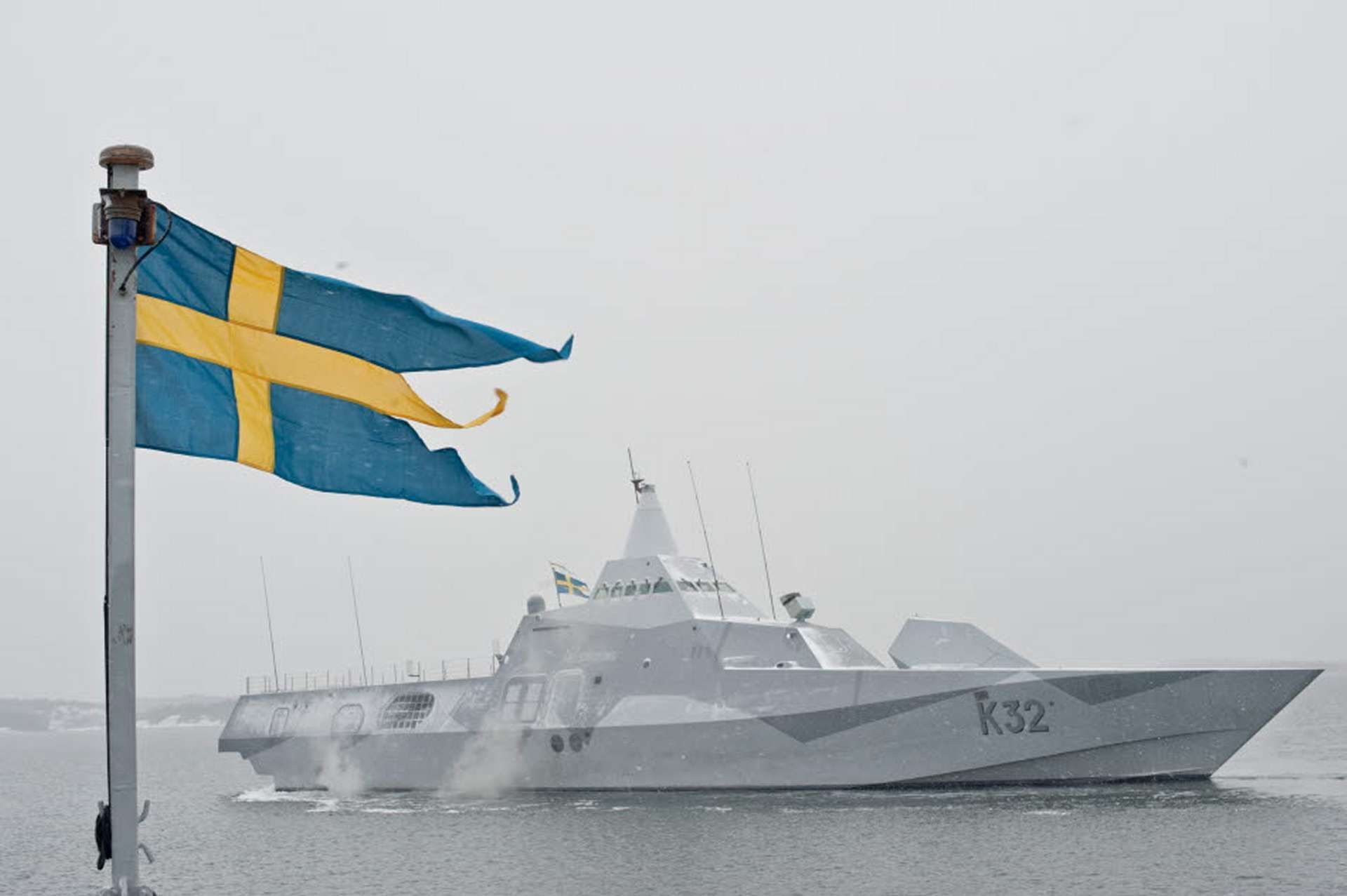
The Navy’s surface combat capabilities will be strengthened through the mid-life upgrades of the Visby-class corvettes and the acquisition of new surface combat ships of the Luleå-class between 2025 and 2030. (Picture source: Swedish MoD)
Navy Expansion
The Swedish Navy's role in securing control over maritime areas, particularly in the Baltic Sea region, is a central component of the new defense strategy. Its primary mission is to protect critical sea routes essential for trade and the transport of military units and supplies. This responsibility aligns with Sweden's duties as a NATO member, ensuring open sea routes and supporting the Alliance's deterrence and defense operations. The Navy will maintain high availability, readiness, and operational mobility, enhancing its capabilities both independently and in cooperation with NATO forces.
The Navy’s surface combat capabilities will be strengthened through the mid-life upgrades of the Visby-class corvettes. These upgrades include arming the ships with air defense missile systems, improving sensors for air, surface, and underwater surveillance, and enhancing electronic warfare capabilities. The Navy is also gradually introducing command support systems to increase interoperability with NATO.
Additionally, the acquisition of new surface combat ships of the Luleå-class is set to begin between 2025 and 2030. These ships will provide extended endurance, enhanced air defense capabilities, and leadership functions at sea. The enhanced air defense system, integrated with the Air Force's command and surveillance systems, will improve Sweden's air defense capability and contribute to NATO's integrated air and missile defense.
Mine clearance remains crucial for ensuring mobility for both national and allied forces. Between 2025 and 2030, existing mine clearance vessels will be supplemented with unmanned, autonomous, and remotely controlled systems. The current naval mine clearance systems are outdated, prompting the Armed Forces to initiate studies and concepts to assess future capability needs and replacements. Seagoing platforms, combined with unmanned mine clearance systems, will form the core of this effort. Additionally, the development and procurement of unmanned aerial vehicles will begin.
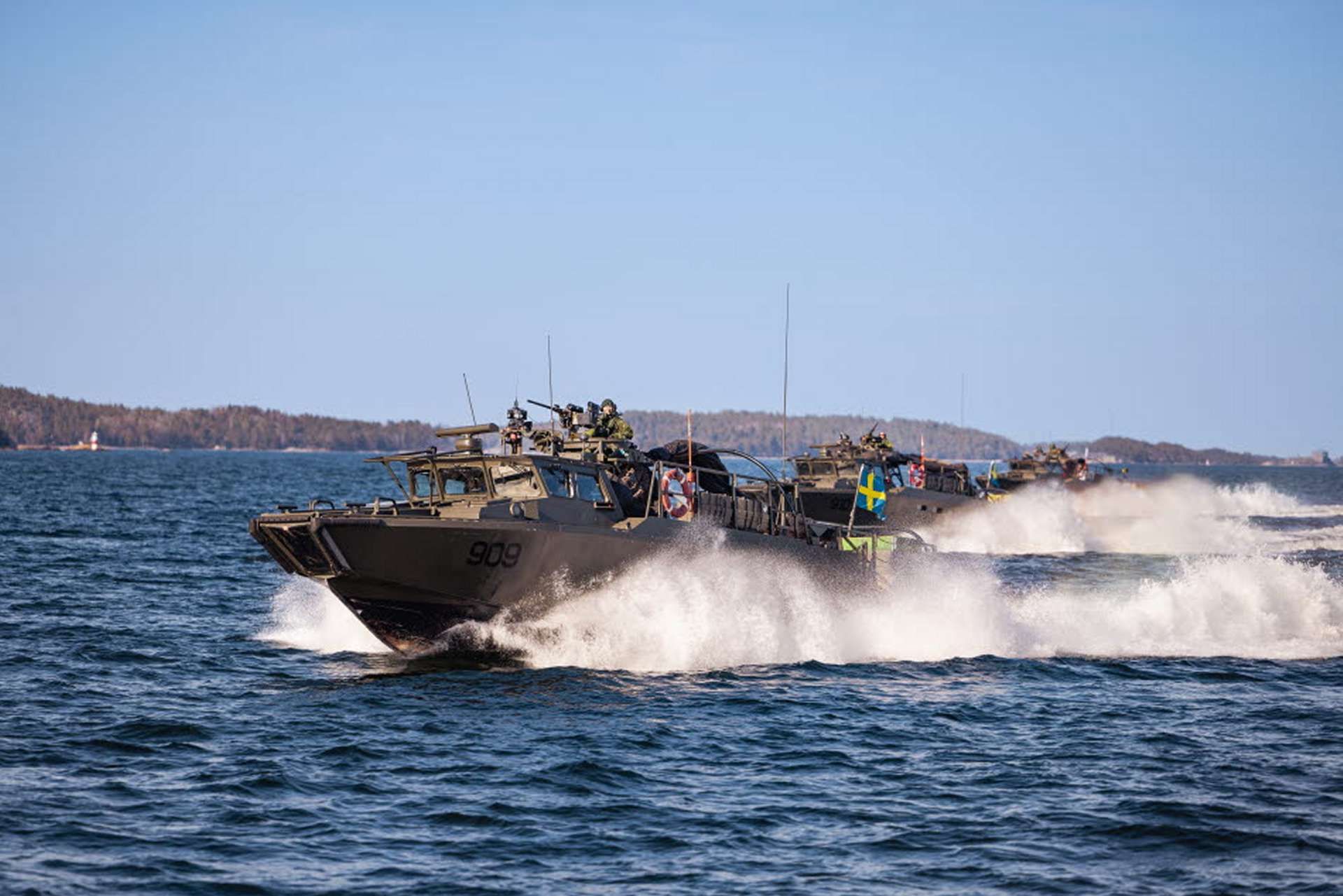
Amphibious units will further specialize in both land and sea operations and will receive new indirect fire capabilities, as well as new vessels to replace the Combat Boat 90H. (Picture source: Swedish MoD)
Submarines continue to be critical to Sweden's defense strategy. A life-extension program for Gotland-class submarines is planned for 2025–2030 to maintain their capabilities and increase availability. The production of Blekinge-class submarines will also continue, with preparatory work beginning to eventually replace the Gotland-class submarines during 2025–2030.
Amphibious units will further specialize in both land and sea operations and will receive new indirect fire capabilities. Procurement of air defense systems for amphibious units and weapons systems for engaging both land and sea targets will commence. Command systems will be upgraded to achieve greater interoperability. The replacement of older transport boats, including the Combat Boat 90H, will also occur. The ability to support special forces and NATO's special operations using parts of the amphibious units will be further developed. Coastal missile capabilities will be expanded and organized into two units to increase both availability and endurance.
Naval logistics capabilities will be strengthened by establishing military naval bases in the three garrison towns of Haninge, Gothenburg, and Karlskrona. These naval bases will enhance the ability to provide logistical support to allied forces within the maritime domain and meet the mobilization and supply needs of the garrisons during heightened readiness. The two newly established naval base battalions in Haninge and Karlskrona will continue to develop.
Lastly, the Swedish government has assessed that naval endurance should be strengthened, including increasing ammunition stockpiles, both specific to the Navy and other qualified munitions, to better meet NATO's requirements. The renewal of the Robotsystem 15 (RBS 15) anti-ship missile will also take place, enhancing the Navy's long-range strike capability.
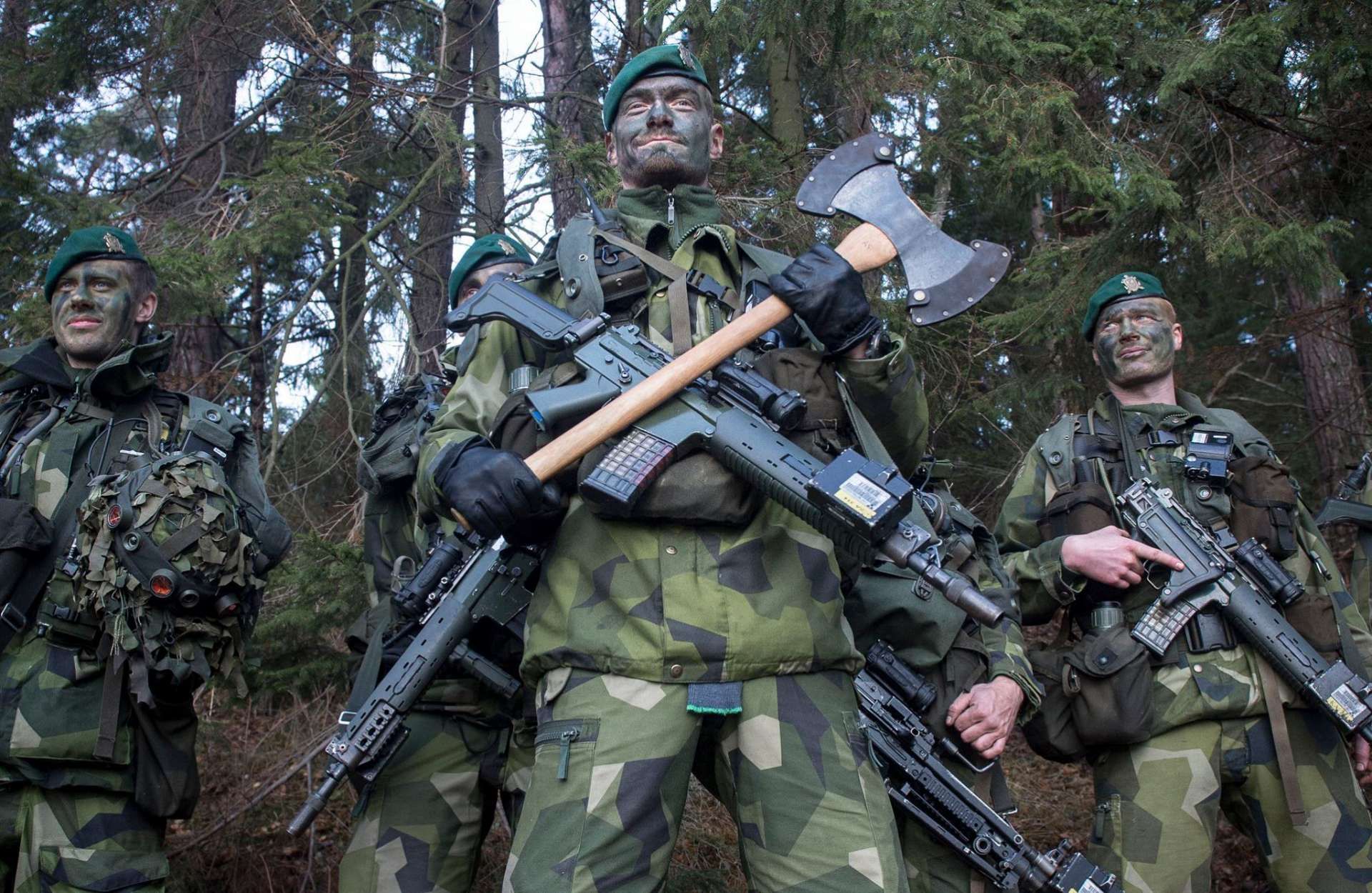
Sweden’s defense strategy acknowledges the critical role that Special Forces (SOF) will have in both national defense and NATO operations, particularly in response to the 2022 Russian invasion of Ukraine. (Picture source: Swedish MoD)
Special Forces Expansion
Sweden’s defense strategy acknowledges the critical role that Special Forces (SOF) will have in both national defense and NATO operations, particularly in response to the evolving geopolitical situation following the 2022 Russian invasion of Ukraine. The Swedish Special Forces are tasked with carrying out specialized operations, both independently and in coordination with other military branches and government agencies.
There is a strategic focus on enhancing SOF's ability to operate autonomously, with improvements in logistics, command, and mobility capabilities. This will allow them to execute operations across various conflict scenarios, including hybrid threats and situations below the threshold of armed conflict.
In line with NATO’s capability requirements, Sweden’s Special Forces will undergo specialization and restructuring. Elements of the Ranger and Northern Ranger battalions will be developed to support SOF, strengthening Sweden’s contribution to NATO special operations. These units will be adapted to meet the increased demands for endurance and autonomy, allowing them to sustain operations in high-intensity conflicts.
The Maritime Special Forces will also be enhanced, with parts of the amphibious units upgraded to support both national and NATO missions. This transformation is planned for the 2025–2030 period, ensuring that Sweden’s SOF remains a flexible and capable force.
A key focus for the Special Forces will be improving their strategic, operational, and tactical mobility. This includes ensuring their capability to operate in air, sea, and land environments and enhancing their capacity to counter high-level adversaries during armed conflict. The integration of autonomous and unmanned systems will further expand the intelligence, direct action, and logistical capabilities of Sweden’s SOF, enabling them to respond quickly and effectively to diverse threats.
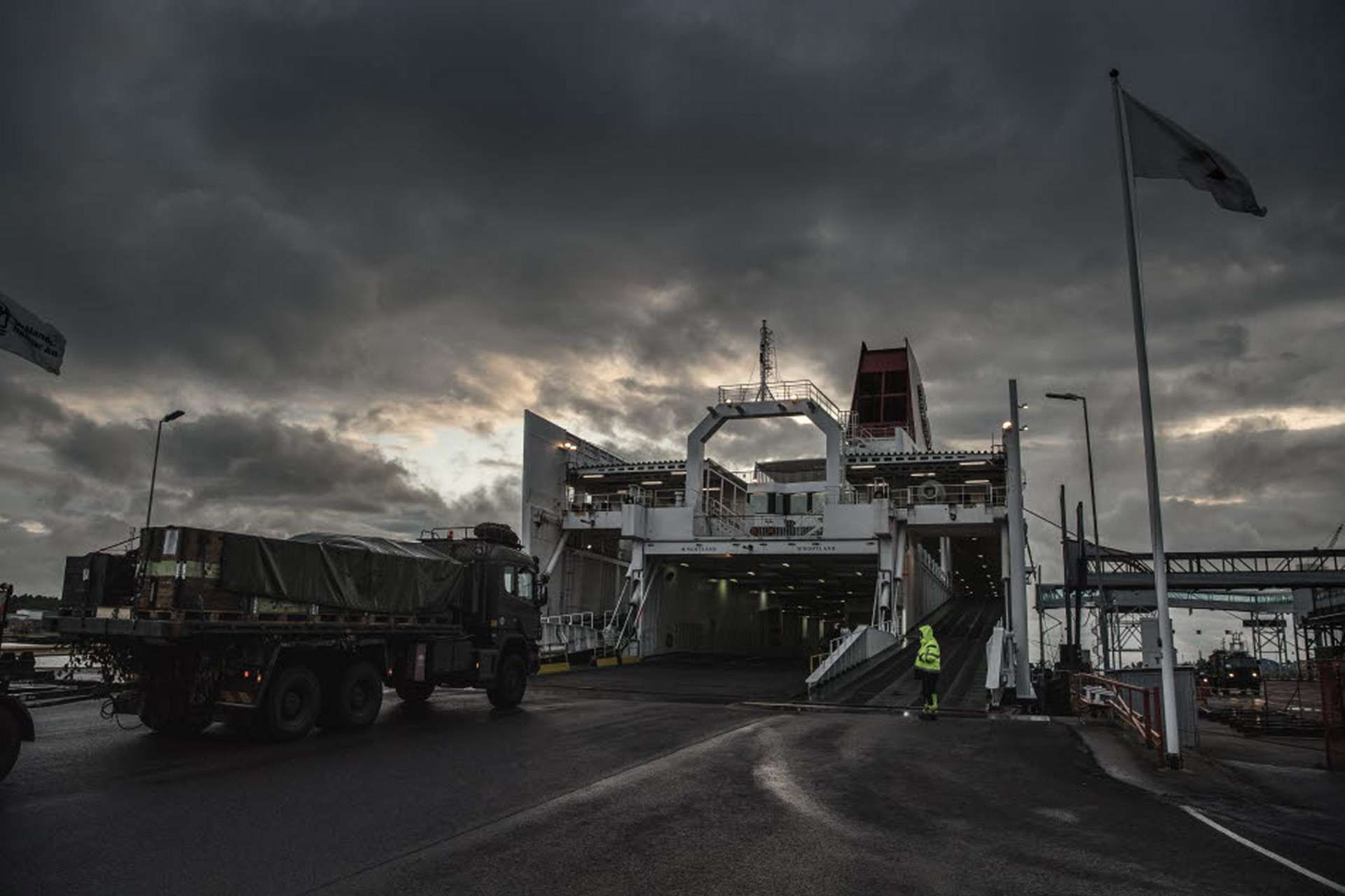
To sustain these military enhancements, the Swedish government emphasizes the importance of a robust logistics function to support long-term military operations, both independently and within NATO frameworks. (Picture source: Swedish MoD)
Logistics Enhancement
To sustain these military enhancements, the Swedish government emphasizes the importance of a robust logistics function to support long-term military operations, both independently and within NATO frameworks. The plan aims to strengthen command structures and enhance accountability, focusing on the ability to receive and support allied forces on Swedish territory.
A key aspect of the logistics strategy is the development of resilient supply chains, with stockpiles of essential resources such as fuel, ammunition, spare parts, and military-specific medicines. These efforts are informed by lessons learned from the conflict in Ukraine, where resource consumption has posed significant challenges in high-intensity conflicts.
Sweden intends to build up its stockpiles and ensure sustained logistical support over extended periods, enabling the Armed Forces to remain operational during prolonged engagements. This includes expanding repair capacity, increasing the number of workshops, and acquiring more spare parts to keep critical equipment functional during large-scale mobilization.
Military healthcare is another focus of the logistics framework. The strategy includes plans to increase the number of medical support units, with two hospital companies and three field hospitals, ensuring adequate care for injured personnel during conflict. These measures reflect the government's commitment to developing a cohesive logistics system capable of supporting combat units and meeting NATO’s capability goals.
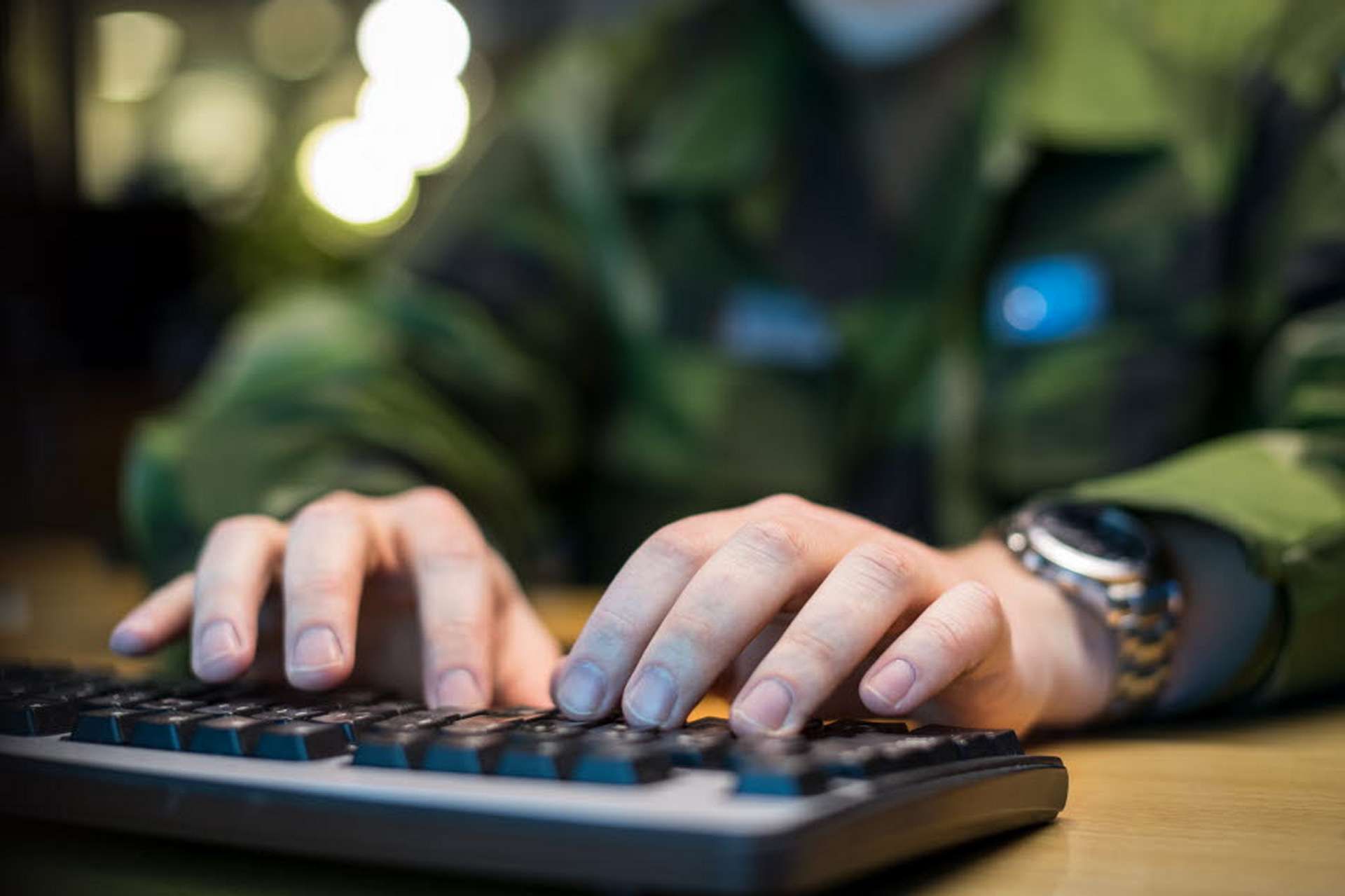
Cybersecurity is a central part of the new Swedish defense strategy, with plans to establish a national cybersecurity center to protect critical infrastructure from cyber threats. (Picture source: Swedish MoD)
Civilian Defense and Resilience
Sweden's new defense strategy emphasizes both military and civilian defense, with a focus on the coordination between these sectors. The government prioritizes essential services like communications, energy, food supply, and water systems as vital to national security. To support this, 35.7 billion SEK is allocated to civilian defense initiatives aimed at strengthening the resilience of these services. Significant resources are also directed towards health, welfare, transportation, and emergency services, with the Swedish Civil Contingencies Agency (MSB) coordinating national efforts.
Cybersecurity is a central part of the strategy, with plans to establish a national cybersecurity center to protect critical infrastructure from cyber threats. Recognizing the growing impact of cyber operations in modern conflicts, Sweden aims to safeguard its infrastructure and ensure the continuity of essential services during crises, learning from recent global events where cyberattacks disrupted civilian and governmental operations.
Economic resilience is another key aspect of the plan. The government seeks to secure the availability of critical goods by collaborating with the private sector, focusing on stockpiling essential resources such as food, energy, and medical supplies. The strategy also highlights psychological defense, stressing the importance of public trust and preparedness during crises. These measures aim to strengthen Sweden’s readiness for both peacetime emergencies and potential wartime scenarios.
Additionally, transportation infrastructure will be developed to support both civilian and military needs, ensuring the efficient mobilization of resources and personnel during conflicts. Emergency services and health systems will receive increased support to enhance their ability to function during crises, with a focus on maintaining these services for both civilian and military operations under Sweden’s new total defense strategy.
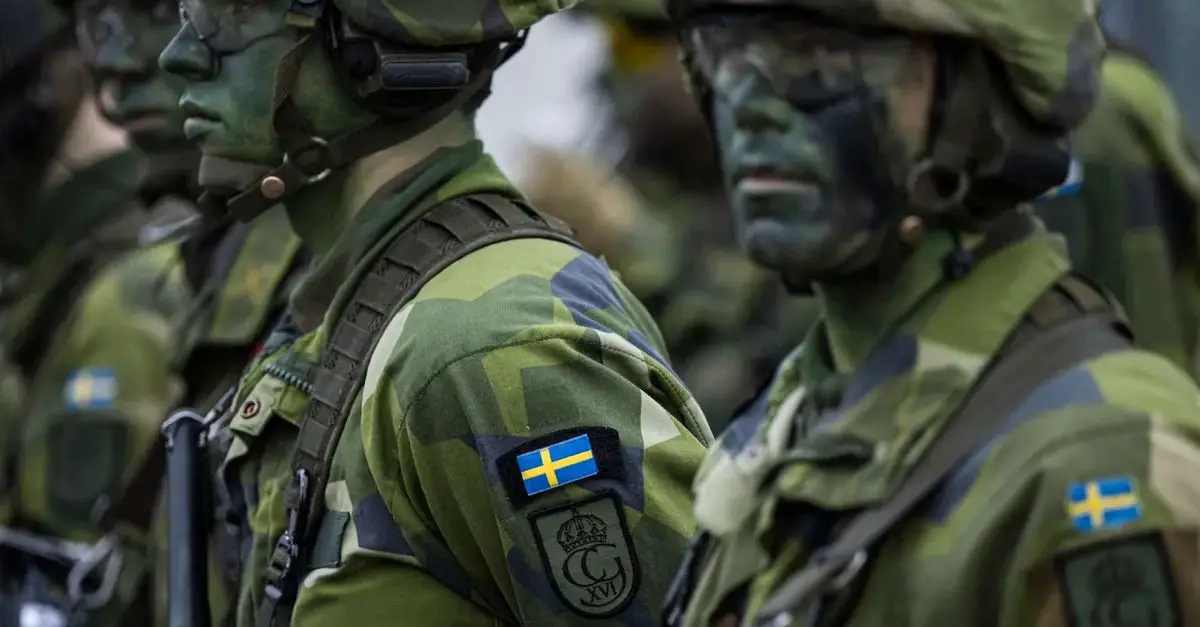



No comments:
Post a Comment